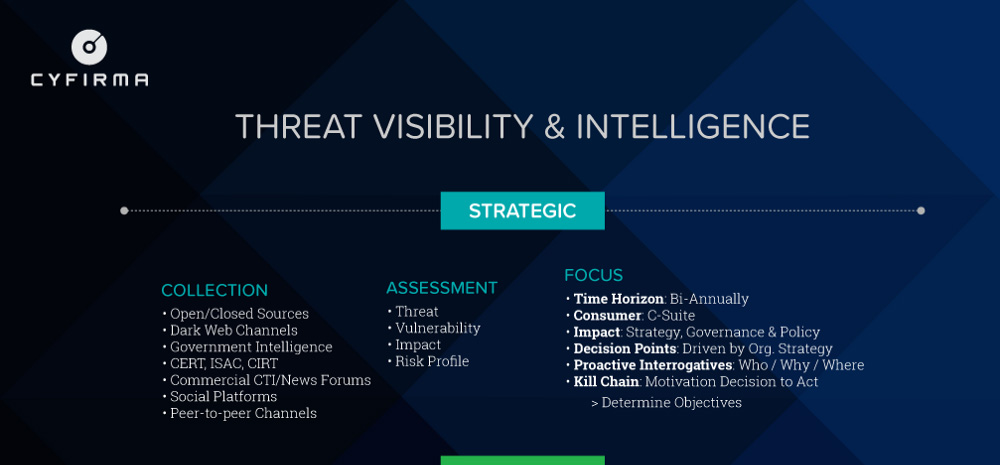



Kumar Ritesh, Chairman and CEO, CYFIRMA
Effective consumption of Cyber Threat Intelligence plays an important role in the integration of threat intelligence program into an organization. To better prepare and protect against imminent cyber-attacks, organizations need to look at the application of threat intelligence to its strategy, governance, process, procedure, controls, and people.
Here is our attempt to define how Cyber Threat Intelligence should be applied and processed at THREE levels i.e. Strategic, Management, and Tactical.
For each level of intelligence, we have defined:
Time Horizon: Minimum review frequency
Consumer: Who should consume threat intelligence within an organization
Impact: Which elements of a process should be reviewed based on threat intelligence
Decision Point: What should trigger the review process
Interrogatives: Which level of threat intelligence provides answers to who, why what, when and how
Cyber Kill Chain: Narratives of each level of threat intelligence mapped to cyber kill chain
THREE level of Cyber Threat Intelligence:
Strategic: Risk-weighted threat intelligence applied to an organization’s overall business strategy enhancing its ability to proactively and continuously optimize the security posture based on its risk profile
Strategic intelligence should enable organizations to perform:
Management: Integrate insights on threat actor campaigns, attack mechanisms, and tools into the organization’s internal policy/processes for Cyber incident response, patch management, configuration management, release management, etc.
Management intelligence should enable organizations to perform:
Tactical: Proactively respond to cyber threats, support detection and response to improve organization’s cybersecurity posture by using malicious IP, malware signatures & mutex, phishing domains, botnet command and control centers
Tactical intelligence should enable organizations to perform:
